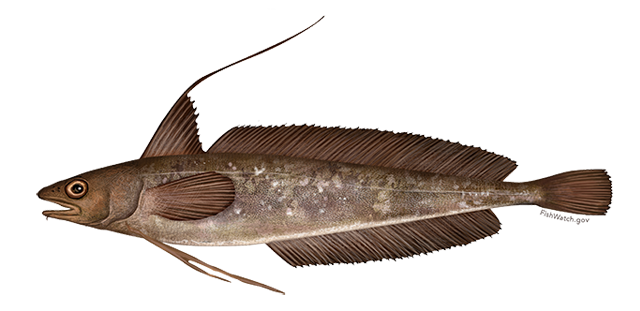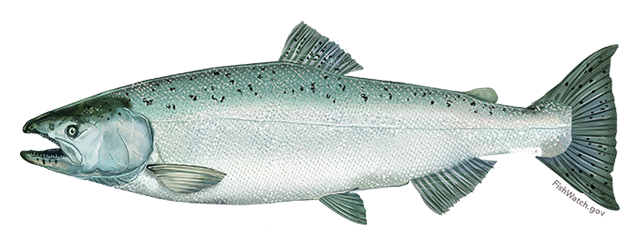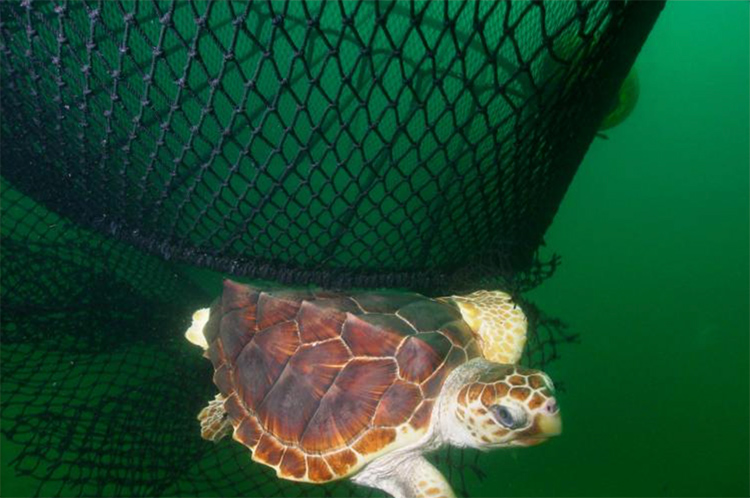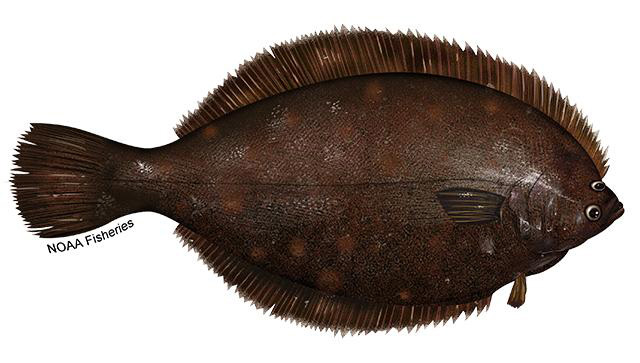Part 9: What Is in a Fishery Management Plan?
General Goals and Content
The MSA requires that a Fishery Management Plan (FMP) must be developed for any fishery requiring conservation and management (16 U.S.C. § 1852(h)(1)). An FMP identifies any problems in a fishery and imposes management measures in the form of fishing regulations designed to correct the problems. The goal of the conservation and management measures is “to protect, restore, and promote the long-term health and stability of the fishery.” FMPs maintain maximum sustainable yield by limiting harvests, allowable gear, seasons, or types of vessels, or all of those factors. The contents of an FMP become regulation (published in the C.F.R.) and are enforceable.
An FMP is dozens of pages long and grows with each amendment. Amendments are adopted following the same procedure for approval as the original FMP. The plan is divided into two so-called “frameworks.” One framework is for conservation and ecological issues. It is referred to as the point-of-concern framework. The second framework is for socioeconomic issues.
An FMP describes the fishery giving the following information:
- An FMP describes the fishery giving the following information as required by 16 U.S.C. § 1853(a)(2).
- The number of vessels involved
- The type and quantity of fishing gear used
- The stocks of fish involved and their location
- Actual and potential revenues from the fishery
- Any recreational interest in the fishery, and
- The nature and extent of foreign fishing and Indian treaty fishing rights.
In developing an FMP, the MSA requires the Council to consider commercial, recreational, charter fishing, and fish processing. Thus, Councils consider the type and quantity of fishing gear used, catch by species either in terms of weight or by numbers of fish, location of fishing areas, the health of essential fish habitat, time of fishing, number of hauls, and whatever economic information is necessary to meet the statutory requirements. In terms of fish processing, the information should include the estimated processing capacity and the actual processing capacity of U.S. processors for the fishery.
Categories of Management
FMPs may divide fish stocks into three management categories or tiers:
- “Active” management: for those stocks with significant levels of catch and requiring intense harvest management;
- “Monitored” management: for those stocks where all that is needed is monitoring of landings and available abundance indices; and
- “Prohibited Harvest” management: for stocks that may not be fished, harvested, or landed.
Additionally, species that are not purposefully fished by any fishery but may be caught incidentally, are described as ecosystem component species. To be considered an ecosystem component species, the fish must not be: (1) a target stock/species; (2) at risk of overfishing or being overfished; and (3) generally retained for sale or personal use. Such species may be listed in an FMP but are not managed.
Where a species is wide ranging, an FMP may establish separate management areas within that range. By distributing harvest levels among the different areas, rather than allowing all vessels to fish in any area, such a management plan will distribute the effects of fishing mortality more evenly and prevent localized depletion, as it would be easier for everyone to fish the areas closer to shore.
Management reference points are established for all stocks requiring active management. Reference points are based on biological data for the stock, such as biomass, maximum sustainable yield, spawning potential ratio, and recruitment overfishing. Reference points help the Council identify when sustainable harvesting for optimum yield is being met. (See Optimum Yield.) When a reference point is triggered, an FMP will have actions that fall into place to maintain the fishery.
 Red Hake
Red Hake
The Ten National Standards
Developing an FMP requires more than counting fish. Fishery Management Plans must conform to ten National Standards set by law under the MSA. These standards require consideration of social, economic, biological, and environmental factors associated with fisheries. The National Standards are shown below. NMFS has issued guidelines for each of the standards.
(16 U.S.C. § 1851: All regulations and Fishery Management Plans must be consistent with the following ten National Standards.)
(1) Conservation and management measures shall prevent overfishing while achieving, on a continuing basis, the optimum yield from each fishery for the U.S. fishing industry.
(2) Conservation and management measures shall be based upon the best scientific information available.
(3) To the extent practicable, an individual stock of fish shall be managed as a unit throughout its range, and interrelated stocks of fish shall be managed as a unit or in close coordination.
(4) Conservation and management measures shall not discriminate between residents of different States. If it becomes necessary to allocate or assign fishing privileges among various U.S. fishers, such allocation shall be:
(A) fair and equitable to all fishers;
(B) reasonably calculated to promote conservation; and
(C) carried out in such manner that no particular individual, corporation, or other entity acquires an excessive share of such privileges.
(5) Conservation and management measures shall, where practicable, consider efficiency in the utilization of fishery resources; except that no such measure shall have economic allocation as its sole purpose.
(6) Conservation and management measures shall take into account and allow for variations among, and contingencies in, fisheries, fishery resources, and catches.
(7) Conservation and management measures shall, where practicable, minimize costs and avoid unnecessary duplication.
(8) Conservation and management measures shall, consistent with the conservation requirements of this chapter (including the prevention of overfishing and rebuilding of overfished stocks), take into account the importance of fishery resources to fishing communities by utilizing economic and social data that meet the requirements of paragraph (2), in order to:
(A) provide for the sustained participation of such communities, and
(B) to the extent practicable, minimize adverse economic impacts on such communities.
(9) Conservation and management measures shall, to the extent practicable,
(A) minimize bycatch and
(B) to the extent bycatch cannot be avoided, minimize the mortality of such bycatch.
(10) Conservation and management measures shall, to the extent practicable, promote the safety of human life at sea.
Some of the standards set mandatory goals, shown by the word “shall” – such as National Standard 1 – “Conservation and management measures shall prevent overfishing…” or National Standard 2 – “Conservation and management measures shall be based on the best scientific information available.” Other standards give some flexibility to management decisions, describing efforts to be made “to the extent practicable” (see standards 3, 5, 8, 9, and 10).
The administrative record of the FMP process must demonstrate that the plan conformed to all ten National Standards. Otherwise a court could send the plan back to the drawing board. According to long-standing precedent, a Council must show it reviewed each standard, even if only giving some standards a quick review, when developing an FMP. Oregon Trollers Ass’n v. Gutierrez, 452 F.3d 1104, 1123 (9th Cir. 2006).
What “to the Extent Practicable” Means
Courts have distinguished between “the extent practicable” and “the extent possible.” One court described the difference as follows: “We think by using the term ‘practicable’ Congress intended rather to allow for the application of agency expertise and discretion in determining how best to manage fishery resources.” When a Council is making such a determination, the regulations require a Council to consider the nature and extent of any adverse effects of the proposed management action and the long- and short-term costs and benefits to habitat, fisheries, and the nation. 50 C.F.R. § 600.815(a)(2)(iii). Conservation Law Foundation v. Evans, 360 F.3d 21, 28 (1st Cir. 2004).
National Standard 1 – Optimum Yield
The first standard – Prevent overfishing while achieving optimum yield – is the heart of any FMP. The plan must define overfishing, outline actions to prevent overfishing, and, when overfishing already exists, must recommend actions to rebuild the stocks in a specified period of time. Any management actions set forth in the FMP must allow the maximum amount of fish to be harvested to achieve optimum yield.
Optimum yield is calculated by establishing the maximum amount of fish that can be harvested safely (maximum sustainable yield or MSY), and then reducing that maximum by any economic, social, and ecological factors. Economic factors include the goals of providing seafood to consumers and maintaining a fishing industry. Social factors include the importance of the recreational fishing experience and the contribution of recreational fishing to the economy and food supply, including its value on ecotourism. Ecological factors include maintaining viable populations of harvested and unharvested species as well as maintaining marine habitats.
Optimum Yield Means…
The amount of fish that (A) will provide the greatest overall benefit to the Nation, particularly with respect to food production and recreational opportunities, and taking into account the protection of marine ecosystems; (B) is prescribed on the basis of the maximum sustainable yield from the fishery, as reduced by any relevant social, economic, or ecological factors. Where a stock has been overfished, Optimum yield is that level of harvest to restore a fishery to maximum sustainable yield. 16 U.S.C. § 1802(33).
Learning about Fishery Economics: Explaining Maximum Economic Yield (15 mins)
National Standard 9 - Bycatch
National Standard 9 requires FMPs to minimize bycatch or, if bycatch cannot be avoided, reduce mortality from bycatch. Like many other National Standards, the goal is “to the extent practicable.” Accordingly, FMPs set standards for bycatch, which are enforceable regulations.
The MSA defines bycatch as “fish which are harvested in a fishery, but which are not sold or kept for personal use.” This definition includes economic discards and regulatory discards. Economic discards are those fish that have to be thrown back because they are an undesirable size, sex, or quality. Regulatory discards are fish that the fisher would want to keep, but regulations prevent harvesting as those fish are being conserved. An example of regulatory discards include ESA-listed salmon in the Pacific Coast Groundfish Fishery. A related problem with bycatch is that discards can be harmful to fisheries because many fish die after being released. The regulatory definition of bycatch excludes recreational catch-and-release.
The MSA requires NMFS to issue of List of Fisheries (LOF) categorizing commercial fisheries based on quantities of incidental takes. The LOF categorizes fisheries and whether the injuries were serious or non-serious. The information is based in part on observer data. (See Part 14, National Observer Program.)
 Chinook Salmon
Chinook Salmon
Catch-and-Release Mortality
Setting minimum sizes is seen as a way to improve fishery health. However, depending on how the fish are harvested, the toll of the capture can lead to that fish’s death upon release. Scientists studying recreational red snapper have found that between 12-17% of released snapper die. Reef fish suffer barotrauma when being pulled from depths greater than 33 feet, and when released, are likely to die. In 2021 the MSA was amended to require fishers in the Gulf of Mexico to have special gear onboard to allow reef fish to be released safely. The so-called DESCEND Act requires either a venting tool to pierce the fish’s abdomen to release excess gases or a descending device which will release the fish at a sufficient depth to recover from barotrauma for the Gulf of Mexico reef fish fishery.
Some fisheries impose a catch limit on types of bycatch, requiring vessels to stop fishing once they’ve caught too many of the bycatch species even if they haven’t harvested the catch limit of the fish they set out to catch. The North Pacific FMC, for example, imposes a prohibited species catch limit on halibut for groundfish fisheries in an effort to maintain sustainable populations of halibut. Other fisheries will allow higher catch limits to fishers that use gear with a lower bycatch rate, such as the Pacific Coast Groundfish FMP.
Bycatch refers to much more than fish, however. Bycatch includes mammals, birds, and reptiles. For example, sea turtle bycatch is identified by NMFS as the primary source of human-caused injuries and fatalities to sea turtles in U.S. waters. Sometimes an FMP will refer to “incidental catch,” which more particularly means the unintentional capture of a marine mammal. Incidental catch is a type of bycatch but with potentially bigger consequences. All marine mammals are protected from harm under the Marine Mammal Protection Act and many are also protected under the Endangered Species Act (see ESA section for discussion on both of those laws).
Harm to a Fishery from Bycatch
Additionally, although some bycatch has no current economic value to the fisher, it may present ecological values. The principles of community ecology tell us that each species has a role in the community. Removals from the top of the food chain will have higher consequences. Removing predators, such as sharks, which can be bycatch, disrupts the natural balance of the fishery. However, while removing large amounts of an important food item (prey species) through bycatch could adversely affect another species (predator) that eats that item, the calculation is not straight forward because predators often eat a variety of food. Therefore, reducing the numbers of a single prey species may lead to an increase in another prey species that the predator will eat instead. As we move down the food chain (big fish eat little fish, which eat smaller fish, etc.), the link between prey species in the bycatch and an important predator species gets weaker and the relationship less clear.
Understanding all the relations among predators and prey species may be impossible for fishery biologists trying to assess the health of a stock. However, it is generally thought that less bycatch is more likely to maintain a balance among the various species in a community. However, zero bycatch does not need to be attained; just as surplus production provides an allowable catch for targeted species, there can also be an allowable catch for those species of no economic value found in bycatch.
Minimizing Bycatch by Changing Gear
Bycatch remains an important issue in fisheries across the world. One way to minimize bycatch is to change what gear is used. For example, the FMP for the Gulf of Mexico shrimp industry requires bycatch reduction devices. Figure 9 shows devices used beginning in the 1980s, on shrimp trawlers. The turtle excluder devices (TEDs) reduce the incidental catch and mortality of sea turtles in trawls. During the 1990s, NMFS adopted a rule requiring most shrimp trawls to also use bycatch reduction devices (BRDs) to reduce the number of juvenile red snapper and other finfish that were caught along with shrimp.

Turtle excluder device
Another gear change to reduce sea turtle bycatch is use of a circle hook in longline fisheries, rather than a J-hook. The circle hook is wider than a J-hook and won’t fit in a sea turtle’s mouth. It also has been shown to reduce bycatch of other species. Information about specific gear restrictions and use of other bycatch devices are available from the regional councils or NMFS.

Overfishing and Rebuilding
According to NOAA’s 2019 stock assessment 22 stocks were on the overfishing list, 46 stocks on the overfished list, and 47 stocks on the rebuilt list. The MSA defines overfishing as where the rate of fishing mortality jeopardizes the capacity of a fishery to produce the maximum sustainable yield on a continuing basis. But that definition contains many variables, such as fishing mortality (F) and MSY, and those variables could lack scientific certainty in some fisheries. Another definition of overfishing is when the spawning potential ratio (SPR) to fall below an agreed-upon level.
 Winter Flounder
Winter Flounder
How FMPs Address Overfishing
These general definitions of overfishing are not adequate for an FMP, however. A plan must define overfishing in the context of that specific fishery based on stock assessments and biomass requirements of the species. Under National Standard 1, the FMP must plan to end overfishing, and that plan also must be consistent with National Standard 7, which requires minimizing the costs of conservation and management measures.
Despite a finding that a fishery is being overfished, an FMP does not have to end overfishing immediately. The MSA requires that rebuilding a fishery must not take longer than 10 years, although it is supposed to be achieved as soon as possible. Results may differ. In the case of the Gulf of Mexico red snapper fishery, for example, a plan to rebuild the fishery was published in 1984. Thirty years later, the rebuilding goal was extended until 2032, although some new data led the Council to believe it was no longer being overfished as of 2019 and plans to rebuild were changed. Another example where the 10-year limit was exceeded was the 20-year rebuilding plan for Atlantic tuna. A court upheld the longer rebuilding period, although NMFS could have instituted a 10-year plan, because the agency found the longer time period was more economical and easier to administer. National Audubon Society v. Evans, 2003 WL 23147552 (D.D.C. July 3, 2003).
Additionally, FMPs do not have to adopt the best rebuilding plan. Instead, NMFS must demonstrate that the plan has at least a 50 percent chance of success in order to withstand court scrutiny. NRDC v. Dailey, 209 F.3d 747 (D.C. Cir. 2000).
« Go to Part 8 | Part 9: What Is in a Fishery Management Plan? | Go to Part 10 »
